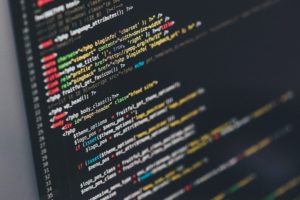What is Plant Layout?
Plant layout is the overall arrangement of the production process, store-room, stock-room, tool-room, material handling equipment, aisles, racks and sub-stores, employee services and all other accessories required for facilitation of the production in the factory.
It encompasses production and service facilities and provides for the most effective utilization of the men, materials and machine’ constituting the process, it is a master blueprint for coordinating all operations performed inside the factory.
Table of Content
Plant Layout Definition
According to F G. Moore, “ A good layout is one which allows materials rapidly and directly for processing. This reduces transport handling, clerical and other costs down per unit, space requirements arc minimized and it reduces idle machine and idle man time.”
Objectives of Plant Layout
A good plant layout strives to attain the following objectives:
- Minimization of material handling.
- Elimination of bottlenecks through the balancing of plant capacities.
- High material turnover through a shorter operating cycle.
- Effective utilization of installed capacity so that the returns on the investments may be maximized.
- Effective utilization of cubic space in the factory area.
- Effective utilization of manpower resources through the elimination of idle time.
- Elimination, improvement or confinement of objectionable operations e.g., operations with bad odour, vibrating operations etc.
- Elimination of physical efforts required by operative workers.
- Avoidance of industrial accidents.
- Better working conditions for the employees like lighting, ventilation, control of noise and vibrations etc.
- Decency and orderliness inside the plant area.
- Better customer services through cheaper and better product supplies according to the delivery promises.
Factors Affecting the Plant Layout Decision
The decision of the plant layout is affected by the following factors:
- Type of production: The layout for an engineering unit will be quite different from that of a flour factory, similarly layout of a paper mill will be different from a tool room and layout of an engine assembly line is different from the toy-making facility.
- Production System: The plant layout in a continuous production system will be totally different from the intermitted production system.
- Scale of Production: The plant layout and material handling equipment in the large scale organization will be different from that in the small scale manufacturing activity.
- Type of Machines: The use of single-purpose and multipurpose machines substantially affects the plant layout. Similarly, noisy and vibrating machines require special attention in the plant layout decision.
- Type of building facilities: The plant layout in a single storey building will be different from that in a multi-storey building.
- Availability of Total Floor Area: The allocation of space for machines, workbenches sub stores, aisles, etc is made on the basis of the available floor area. Use of overhead space is made in case of shortage of space.
- Possibility of Future Expansion: Plant layout is mad in the light of the future requirements and installation of additional facilities.
- Arrangement of Material Handling Equipment: The plant layout and the material handling services are closely related and the latter has a decisive effect on the arrangement of the production process and plant services.
Type of Plant Layout
The popular types of plant layout are:
- Process layout
- Product layout
- Combined layout
- Project layout
- Group Layout
Process Layout
This type of layout is also called functional layout. All machines performing a similar type of operations are grouped at one location in the process layout e.g., all lathes, milling, machines, cutting machines etc. in the engineering shop are clustered in their like groups. Thus all forging will be done in one area and all the lathes will be placed in another area.
In this layout, several products may share a machine to make its full use. The sequential arrangement of the machine group is generally, but not necessarily made on the basis of labor operations.
In this type of layout, the process rather than the product has dominating role. The product is given secondary consideration and is moved for the purpose of operations to the process section with like machines stationed at a particular point. This type of layout is more suitable to job order type of production.
The typical arrangement of the machines in the process layout will be as under:
Advantages of Process Layout
- It eliminates the duplication of machines and enables the optimum use of installed capacity.
- It facilitates flexibility in production. It is more flexible than a line layout. Different products can be made without changes in the arrangements of the machine.
- The production capacity is not arranged in rigid sequence and fixed rated capacity with line balancing.
- The break down of one machine does not interrupt the entire production flow.
- Specialization in supervision becomes possible.
- Individual incentive schemes can be developed.
Disadvantages of Process Layout
- Due to a lack of straight-line sequence of production, it is impossible to maintain the line balancing in production. So the problems of bottleneck and waiting and the idle capacity.
- The cost of material handling increases due to long routing and backtracking between the processes.
- The processing time is prolonged which reduce the inventory turnover and increases the investments in inventories.
- The inspection cost increases. Due to frequent changes in the machine set up, inspection is required at each stage of the process.
- The cost of supervision increases due to specialist supervisors and more number of supervisors are required at each process unit.
- The production planning and control become difficult due to complexities arising in routing, scheduling, dispatching and follow-up.
- It is not possible to implement the group incentive schemes on the basis of the quantity of the products manufacturing.
- More space is required for internal storing, a reservoir of materials and provision for the expansion of the particular process section.
Product layout
In this type of layout, the machines are arranged in the sequence as required by the particular product. All machines as required to balance the particular product line are arranged in a sequential line but not necessarily in the straight line. It is also known as “ the product line layout.”
In this layout, one product goes through all the machines lined up, in the order required by its manufacture. The best-known example of this type of layout is seen in motor car production. To make this layout successful, the workload on the various machines must be balanced. The process of getting even loading at each stage of production is called line balancing.
In this type of layout, the product is dominating over the process, in the sense that the product is given the primary importance and the process machine must remain present at a point where the product needs its services.
Thus, unlike the process layout, the process is given secondary importance in relation to the product. Product layout is more suitable for continuous flow-production with few items of production. It does not require frequent changes in machine set up.
The typical arrangement of the machines in the product with separate independent product lines for Product A and Product B will be as shown in the following figure :
Advantages of Product layout
- Reduced material handling cost due to straight-line production flow.
- Mechanization of material handling between fixed points.
- Line balancing may eliminate bottlenecks and idle capacity.
- Shorter operating cycle due to shorter and speedy movement of materials.
- Maximum utilization of machine and labour capacity through developing a proper balance between them.
- Effective control over production with reduced supervision by generalists supervisor. By reducing the manufacturing to simple steps we can often use less skilled labour.
- Effective quality control with reduced inspection points. It does not require frequent changes in machine set-up.
- Effective production planning and control. Unlike process layout, the routing, scheduling, dispatching and follow up are relatively easier.
- Maximum use of space due to straight production flow and reduced need of interim storing.
- It facilitates the implementation of group incentive schemes for the workers.
- It is relatively easy to control.
Disadvantages of Product layout
- The duplication of machines and equipment necessitates the increased investments in them sometime resulting in idle capacity.
- The production flow is regulated through the straight line sequence and fixed rated capacity, and thus makes it highly inflexible.
- The breakdown of one single machine in the line interrupts the entire production flow.
- Unlike process layout, the benefits of specialized supervision is not possible.
- As the entire production is the result of the joint efforts of all operations in the line, it is difficult to implement individual incentive schemes.
- They are less flexible than others. Any change in product requires rebalancing the line.
Combined Layout
Generally pure process or pure product layout is not found in practice. Both process and product layouts are mutually exclusive. Proper compromise reaping the benefits of both the layouts is possible to some extent. So efforts are made to have the combined layout incorporating the benefits of process and product layout.
Combined layout is developed as under:
- Product layout for the main product with a process layout for joint or by-product tapping the idle capacity of product layout along with marginal investments required in process layout.
- To diversify the production with a view to tap the idle capacity of the product layout. Products with a complete negative correlation with the product line can make the maximum use of idle capacity of the product layout.
- In the product layout, some process may be segregated from the product line e.g., objectionable, hazardous, requiring special treatment and repetitive performance etc.
Project Layout
The manufacturing operation require the movements of men, machines and materials. Generally few inputs tend to be static while the others are moving.
In the product layout and process layout generally the machines have fixed installations and the operators are static in terms of their specified work stations.
It is only the materials which move form operation to operation for the purpose of processing. But where the product is large in size and heavy in weight, it tends to be static, e.g., shipbuilding.
In such a production system, the product remains static and the men and machines move performing the operations on the product. The production characteristics are sufficient enough to treat it as a separate type of layout, viz. static product layout.
Group Layout
Here an attempt is made to introduce some of the advantages of a line layout into a situation where pure line layout is not practicable. Here machines are placed in groups.
Each machine group makes maximally of parts which require similar treatment. This layout lies between process layout and line layout. It is easier to control than a strictly process layout and has more flexibility into the manufacturing system as regards the batch size variations and the differing operations sequences.
Reference
- Chase R.B., Jacobs F.R., Operations Management for Competitive Advantage, The Mc Graw Hill
- R.Johnson, “Spacecraft for Multi- Floor Layout Planning, Management Science 28, No.4(April 1982), PP407-17
- M.S. Sommers and J.B. Kernan, “A Behavioral Approach to Planning, Layout and Display,” Journal of Retailing, Winter 1965-66, PP 21-27.
Go On, Share & Help your Friend
Did we miss something in Organizational Behavior Tutorial or You want something More? Come on! Tell us what you think about our post on Plant Layout | in the comments section and Share this post with your friends.





